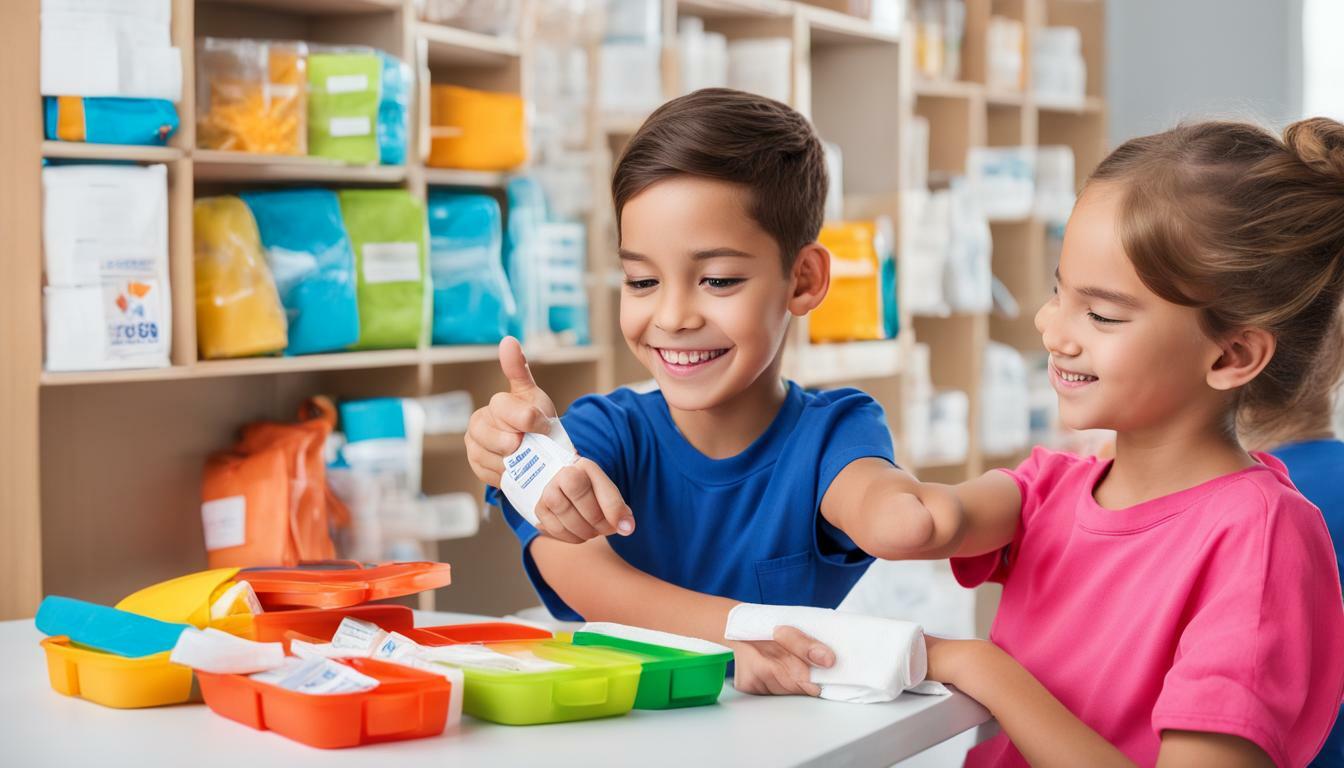As parents, keeping our children safe is our top priority. The first aid kit is an essential part of every home, but it can also pose potential hazards to curious little hands. Child-proofing your first aid kit is crucial for ensuring both safety and accessibility in times of emergency.
In this section, we will delve into the importance of child-proofing your first aid kit, explore potential hazards that may arise from an improperly secured kit, and offer practical tips and guidelines to ensure your kit is secure without compromising urgent care.
Key Takeaways:
- Child safety is a crucial aspect of maintaining a secure home environment, including first aid supplies.
- Child-proofing your first aid kit ensures that emergency supplies are accessible only when needed and safely out of reach from children.
- Assessing your first aid kit’s current state, including storage, location, and accessibility, is the first step in identifying the areas that need improvement for child safety.
Why Child-Proof Your First Aid Kit?
Child safety should always be a top priority in every aspect of your home, including your first aid supplies. A properly secured and child-proofed kit can prevent potential hazards and create a safe environment for your little ones.
First aid supplies may contain sharp tools, small parts, or hazardous materials that can be dangerous to children if accessed without supervision. Moreover, in the event of an emergency, accessibility is key, and a child-proofed kit can ensure that supplies are easily accessible when needed.
Baby-proofing your home is crucial, but it’s equally essential to consider first aid supplies when it comes to child safety. By child-proofing your first aid kit, you can create a secure environment for both your children and yourself, reducing the risk of accidents and promoting a safe home environment.
So, before you think it’s unnecessary to child-proof your first aid kit, remember the potential hazards and accidents that could occur in the absence of proper safety measures. Keep your little ones safe and your home prepared with a child-proofed first aid kit.
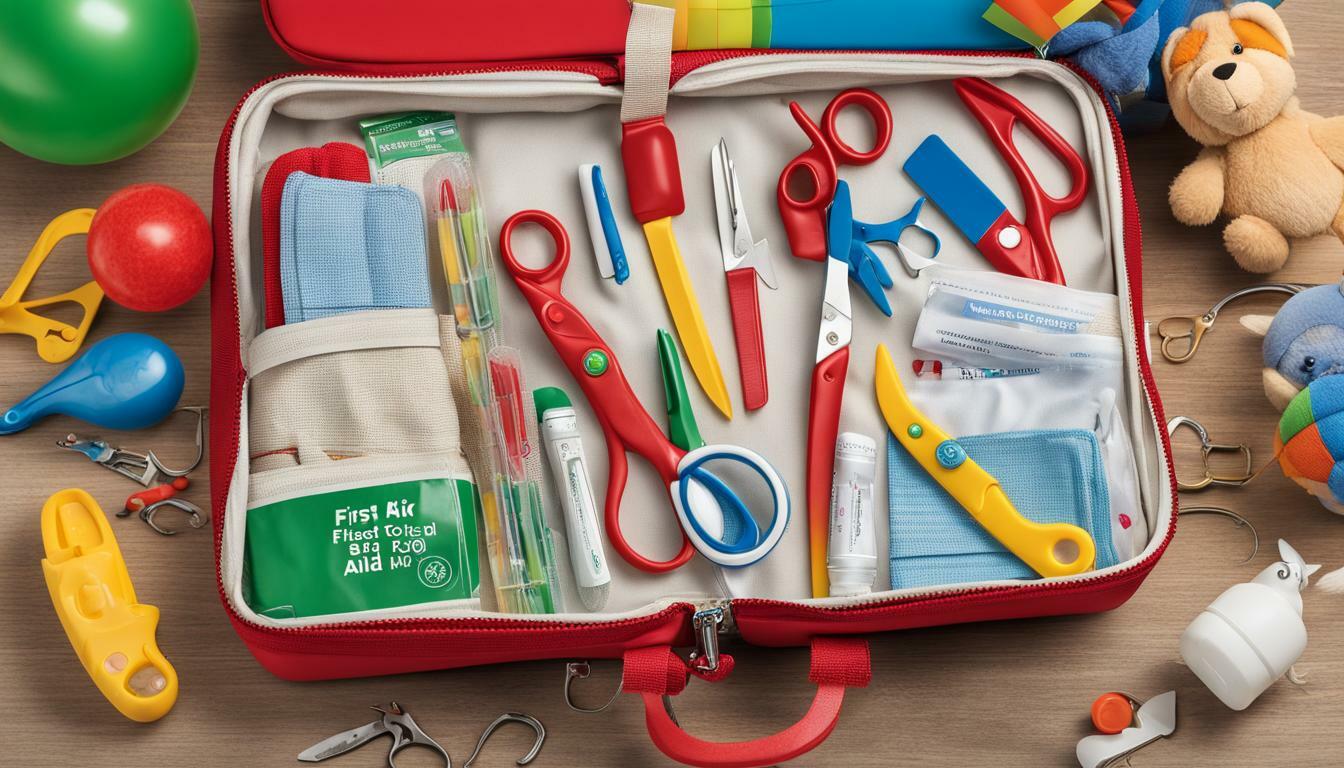
Assessing Your First Aid Kit’s Current State
Before you begin child-proofing your first aid kit, it’s essential to assess its current state. Here are some key elements to consider:
| Element | Description |
|---|---|
| Location | Where is your first aid kit located? Is it easily accessible in case of an emergency? |
| Storage Condition | Is your kit stored in a safe and dry place to prevent the contamination of its contents? |
| Accessibility | Can you easily access the kit, or is it hidden away where it may be difficult to find? |
| Supplies | Do you have all the necessary supplies, and are they in good condition and within their expiry dates? |
By assessing these elements, you can identify areas that need improvement to ensure the safety and accessibility of your first aid kit. Take note of any potential hazards and consider how you can make changes to prevent them from occurring.
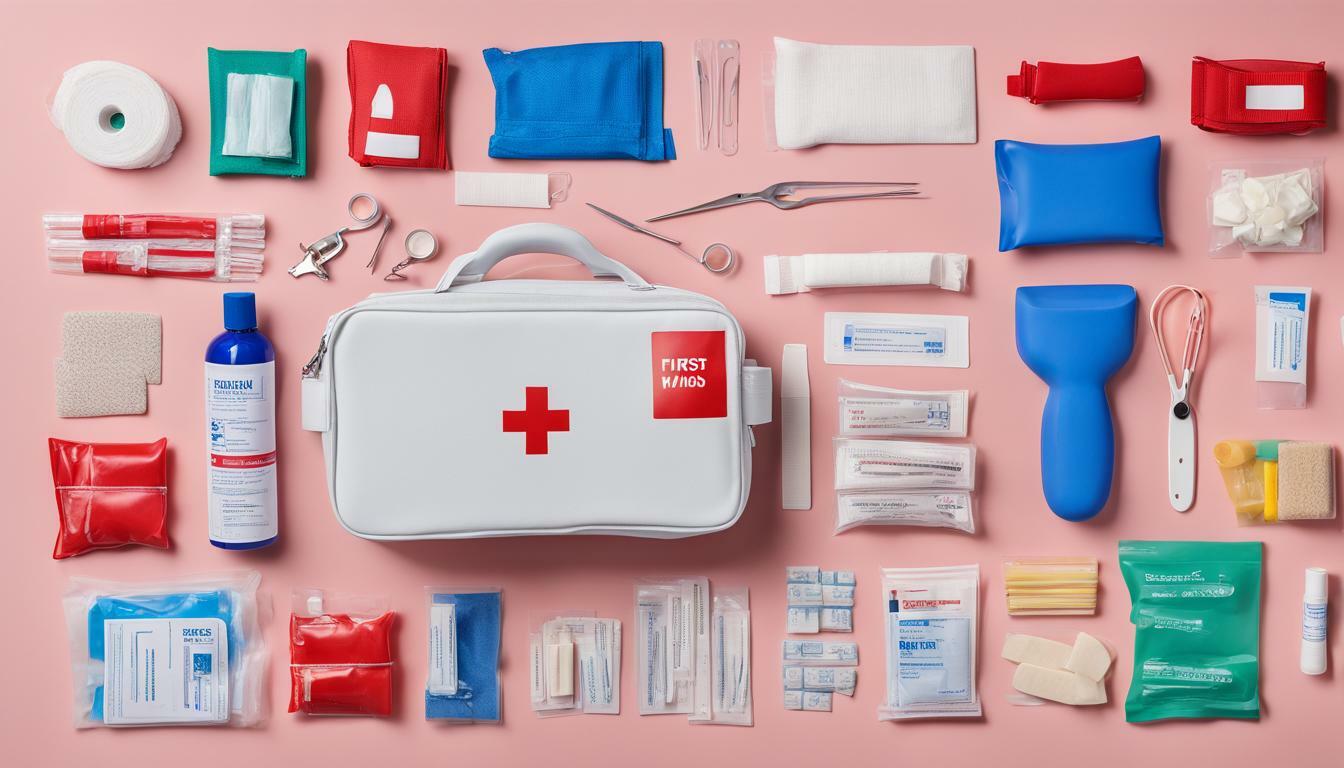
Remember, assessing your first aid kit’s current state is the first step to child-proofing it and ensuring the safety of your children.
Child-Friendly First Aid Supplies
When childproofing your first aid kit, it’s crucial to consider the supplies contained within it. Choosing child-friendly first aid supplies ensures that you can administer emergency care while prioritising child safety. Here are some tips for selecting the appropriate supplies:
- Bandages: Choose bandages that are specifically designed for children and are easy to apply. Avoid bandages with sharp fasteners that could be a choking hazard.
- Medications: Always consult with a healthcare professional when choosing over-the-counter medications for your child. Ensure they are age-appropriate and have clear dosage instructions.
- Tools: Scissors and tweezers are essential tools for a first aid kit. Choose ones with rounded edges and large handles that are easy to grip.
It’s important to keep in mind that children are curious and may be tempted to explore the contents of the first aid kit. Be sure to avoid any items that may be dangerous or harmful if swallowed, such as alcohol swabs or thermometers with mercury.
By selecting child-friendly first aid supplies, you can ensure that your kit is equipped with the necessary items to administer care while keeping children safe. Remember, childproofing your first aid kit is just one step in creating a secure and prepared environment for your family.
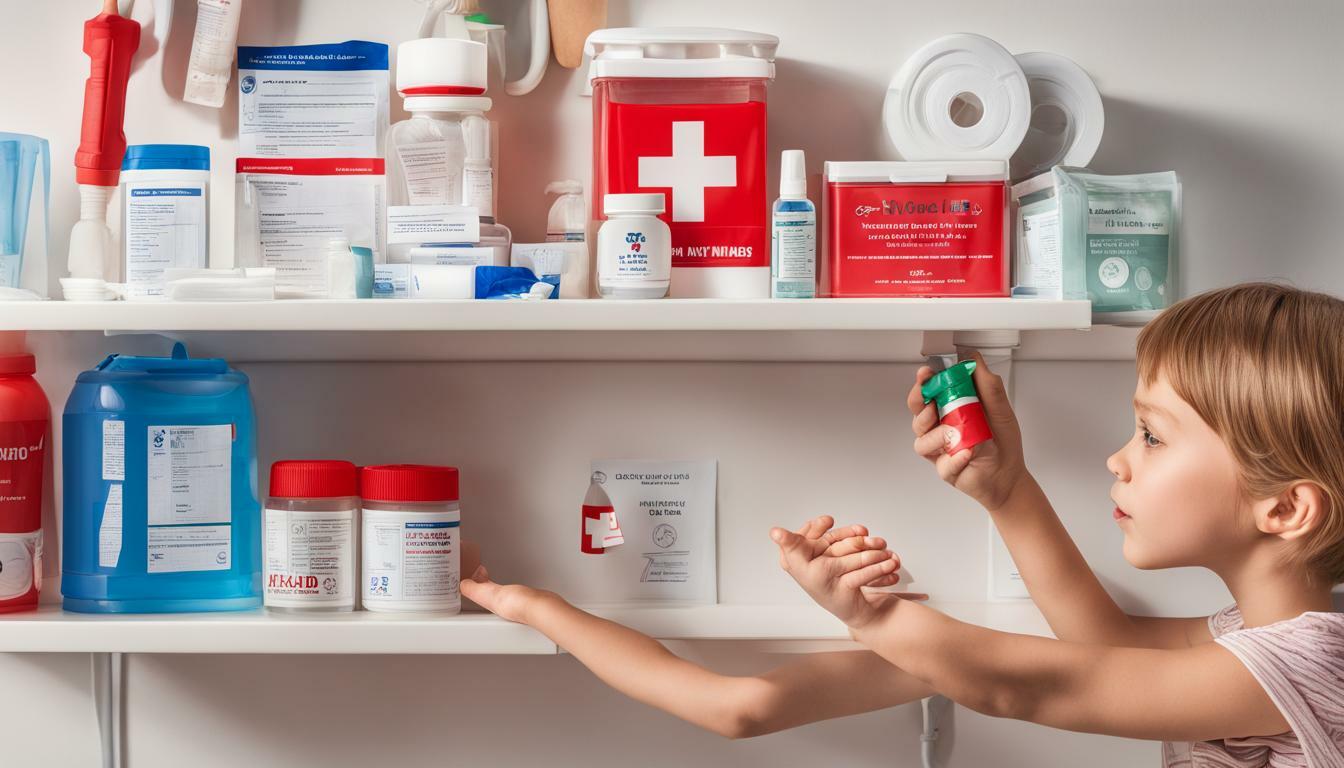
Securing Your First Aid Kit
Child-proofing your first aid kit is an essential step in ensuring that emergency supplies are safely out of reach of children. Here are some practical tips for securing your first aid kit:
Elevated Storage
One effective way to secure your first aid kit is to store it in an elevated location, such as a high shelf or cabinet that is out of children’s reach. This can be easily achieved by using a step-stool or ladder to access the kit when needed. Make sure to choose a location that is easily accessible for adults but not for children.
Lockable Containers
Another option is to use a lockable container to secure your first aid kit. These containers are designed to keep the contents of your kit secure and can be easily opened with a key or combination lock. Lockable containers are especially useful if you need to store your kit in an area that is accessible to children, such as a kitchen or bathroom cabinet.
Cabinet Locks
If you choose to store your first aid kit in a cabinet or drawer, consider installing childproof cabinet locks to prevent children from accessing it without supervision. There are many types of childproof locks available, such as magnetic, adhesive, or sliding locks, that can be easily installed on cabinets and drawers.
By using these child-proofing techniques, you can ensure that your first aid kit remains safely out of reach of children while still being easily accessible in case of an emergency.
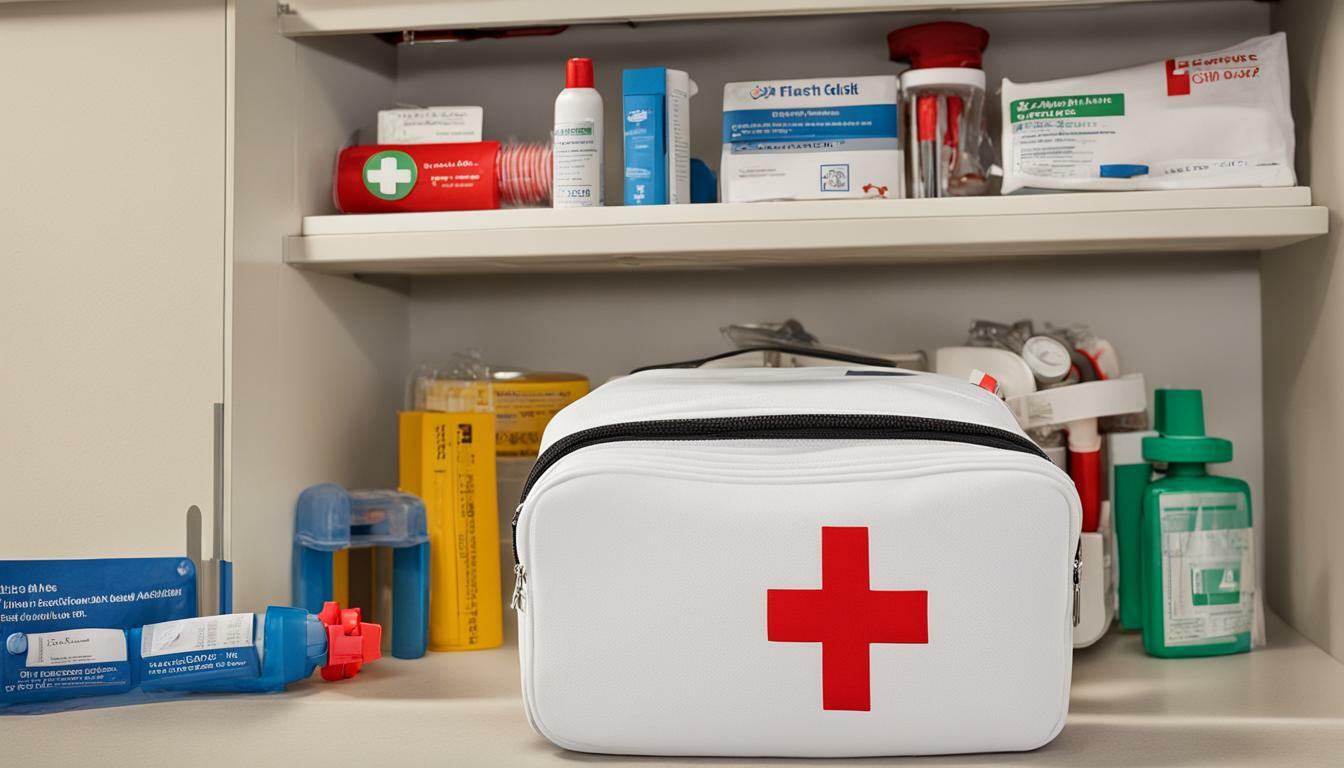
Remember that child-proofing your first aid kit is just one aspect of emergency preparedness. It’s also important to regularly check and replenish your kit to ensure that it is always ready for use during an emergency.
Relevant Safety Labels and Instructions
In this section, we’ll stress the importance of reading and following relevant safety labels and instructions on first aid supplies. It’s crucial to take note of potential hazards and keep your kit secure, especially when child-proofing your first aid kit.
Make sure to look for age restrictions or dosage guidelines on medication, and familiarise yourself with potential choking hazards on small items such as cotton buds. When storing your first aid kit, ensure that it is out-of-reach and inaccessible to children. Remember, child-proofing your first aid kit is not just about locking it away, but making sure that it remains safe and secure for every member of the household.
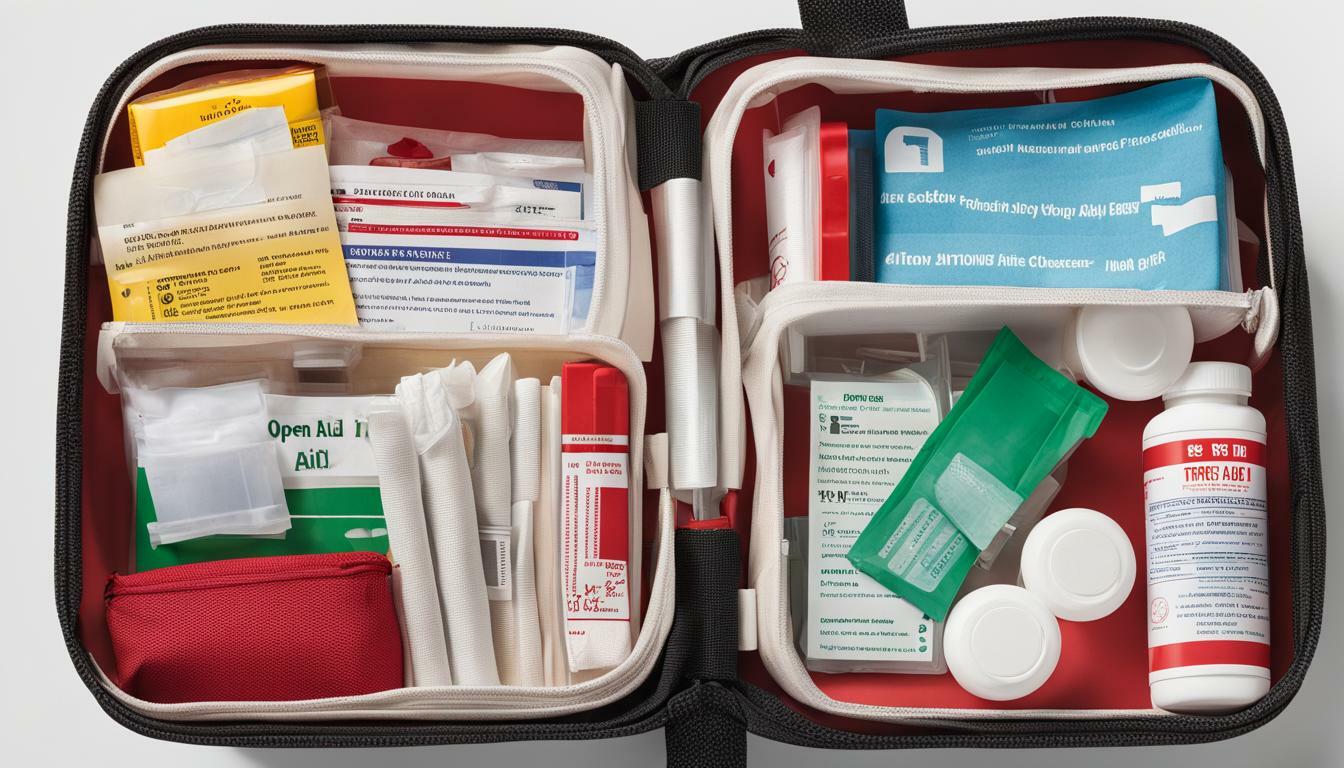
It’s also important to educate children on the proper use and handling of first aid supplies. Show them where the kit is kept and explain to them when and how to use it. Give them the tools and knowledge to make responsible choices if they need to access the kit when you’re not available. By instilling good habits and practice, you’re providing them with essential skills that will benefit them in the long run.
Teaching Kids About First Aid Kit Safety
One of the most important steps in child-proofing your first aid kit is educating your children about its purpose and proper use. By teaching them about first aid supplies, you can empower them to make responsible choices and understand the significance of keeping the kit secure.
Start by explaining to your children what first aid is and why it’s important. Use simple language and examples that they can relate to, such as a scraped knee or a bee sting. Then, show them the first aid supplies and explain what each item is used for.
It’s crucial to emphasize the importance of not using the supplies without adult supervision and to never treat someone else without permission. Additionally, make sure your children understand the difference between items that are safe for them to use, such as bandages, and ones that are not, such as medications or sharp tools.
You can also make learning about first aid fun by playing games or doing role-playing activities. For example, you can create a “first aid kit scavenger hunt” where your children search for specific items and learn their uses. You can also have them practice calling for emergency services and giving their location in case of an emergency.
By teaching your children about first aid kit safety, you are not only promoting child safety, but also preparing them for potential emergencies. It’s important to make sure they understand that the first aid kit is not a toy and should always be treated with respect and care.
Child Safety and First Aid Supplies
When it comes to child safety, it’s essential to have child-friendly first aid supplies in your kit. Make sure to choose supplies that are safe for children, such as adhesive bandages with fun designs or liquid medications with child-safety caps. Additionally, keep the first aid kit accessible to adults but out of reach of children, such as in a locked cabinet or high shelf.
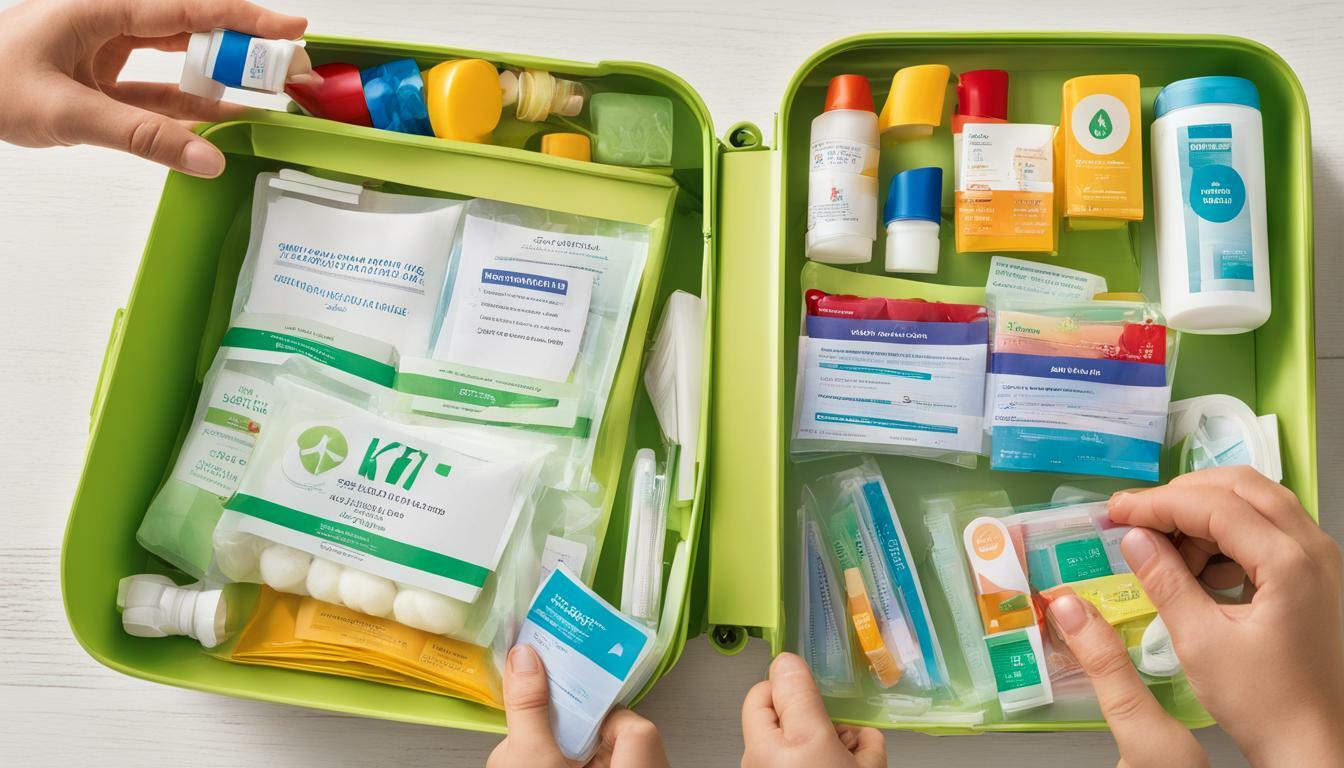
By prioritising child safety in every aspect of your home, including first aid supplies, you are creating a secure and prepared environment for your family. Teaching your children about first aid kit safety is a crucial step in ensuring their safety and promoting responsible behaviour. By following the guidelines and tips provided in this guide, you can secure your kit and keep your children safe without compromising urgent care.
Regular Maintenance and Replenishment
Proper maintenance and replenishment of your first aid kit are essential to ensure it is always prepared for emergencies, while also maintaining child safety and accessibility. Here are some guidelines to follow:
- Check the expiration dates of all medications and supplies regularly, and replace any that have expired.
- Inspect the contents of the kit after each use, and replenish any items that have been used or are running low.
- Store the kit in a cool, dry place, away from direct sunlight, heat sources, and moisture, to prevent deterioration of supplies.
- Keep an inventory of the contents of the kit, and update it as needed to ensure that you have all the necessary supplies on hand.
By following these guidelines, you can ensure that your first aid kit remains fully stocked and ready to use, making it easier to respond to emergencies quickly and effectively.
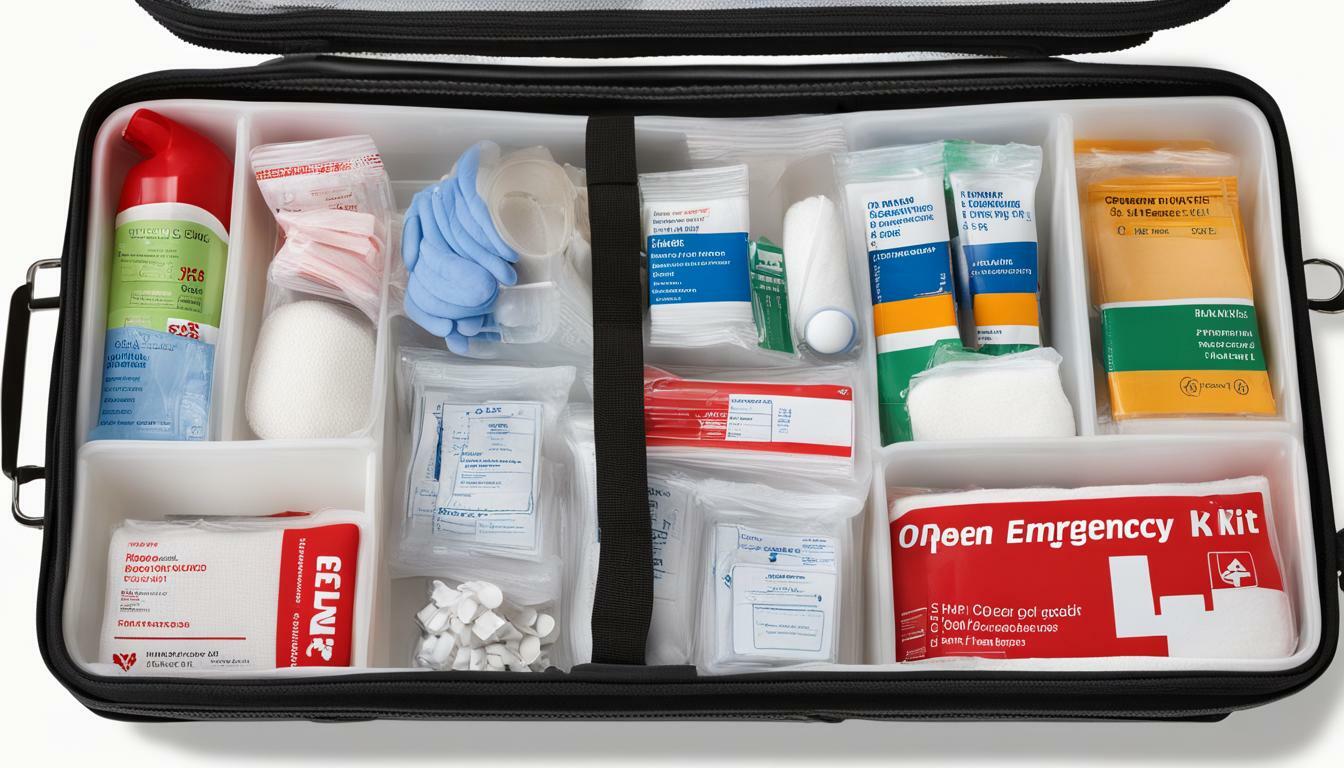
Child-proofing your first aid kit is an important step in emergency preparedness. By securing your kit and keeping it well-maintained and replenished, you can ensure that it is always ready to use, while also maintaining child safety and accessibility.
Storing Your First Aid Kit
Proper storage of your first aid kit is just as important as child-proofing it. When choosing a location, consider the temperature, moisture, and accessibility. Your kit should be stored in a cool, dry place away from direct sunlight and heat sources. If your home is prone to moisture or dampness, use a waterproof container to keep the contents dry and prevent damage.
| Do: |
|
|---|---|
| Don’t: |
|
By storing your first aid kit in a secure and accessible location, you can ensure that it will be readily available when you need it most. Remember to check the contents regularly and replenish any supplies that have expired or been used.
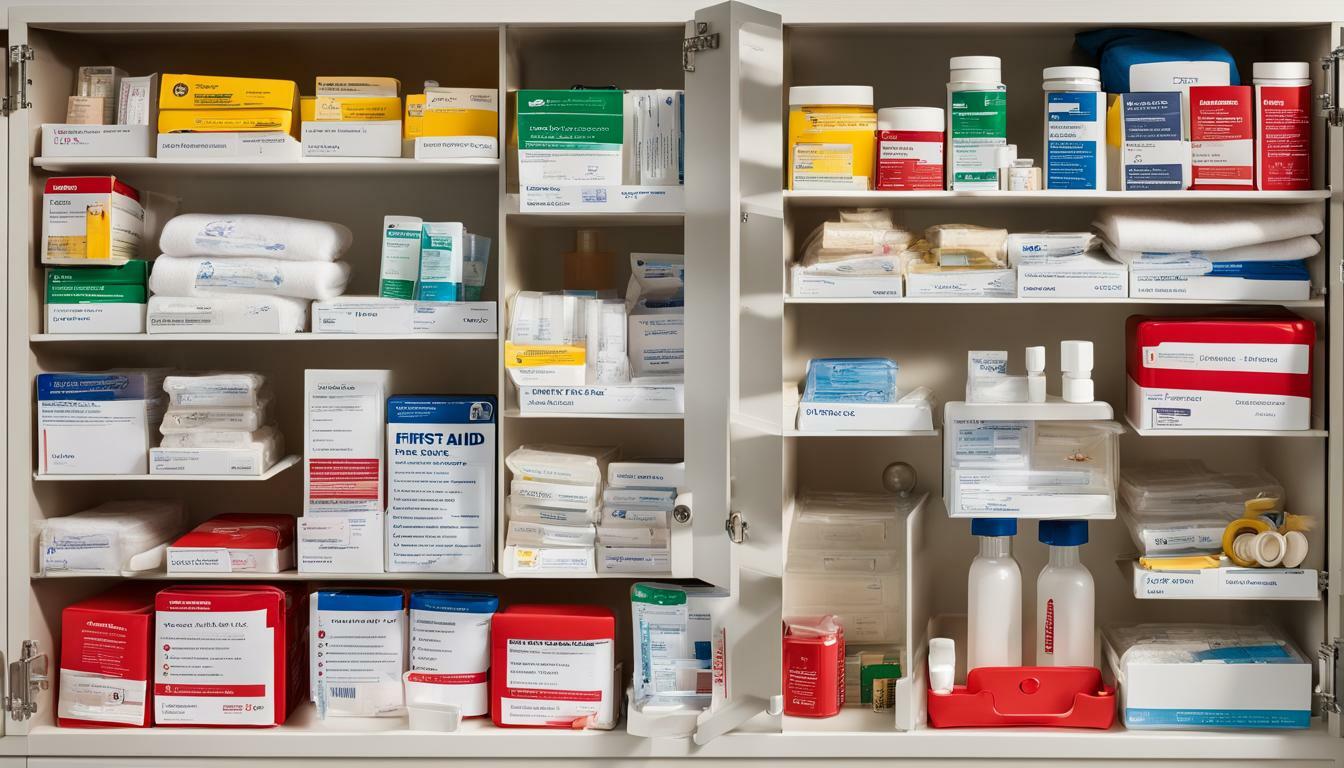
Emergency Preparedness Plans
In times of emergency, having a well-stocked and child-proofed first aid kit is crucial. However, it is also important to have a plan in place that outlines the steps you and your family should take during an emergency. A child-friendly emergency preparedness plan that includes accessing and using the first aid kit can provide peace of mind and ensure everyone’s safety.
When creating an emergency plan, consider the following:
- Identify potential emergencies that could happen in your area and create a plan for each scenario.
- Designate a safe meeting place outside of your home.
- Assign roles and responsibilities to each family member.
- Include clear instructions on accessing and using the first aid kit.
- Practice your emergency plan with your family, so everyone is prepared and knows what to do in case of an emergency.
Having a well-thought-out plan can make a significant difference during emergent situations. By incorporating these steps into your emergency preparedness plan, you can ensure that your child-proofed first aid kit is accessible and utilized appropriately.
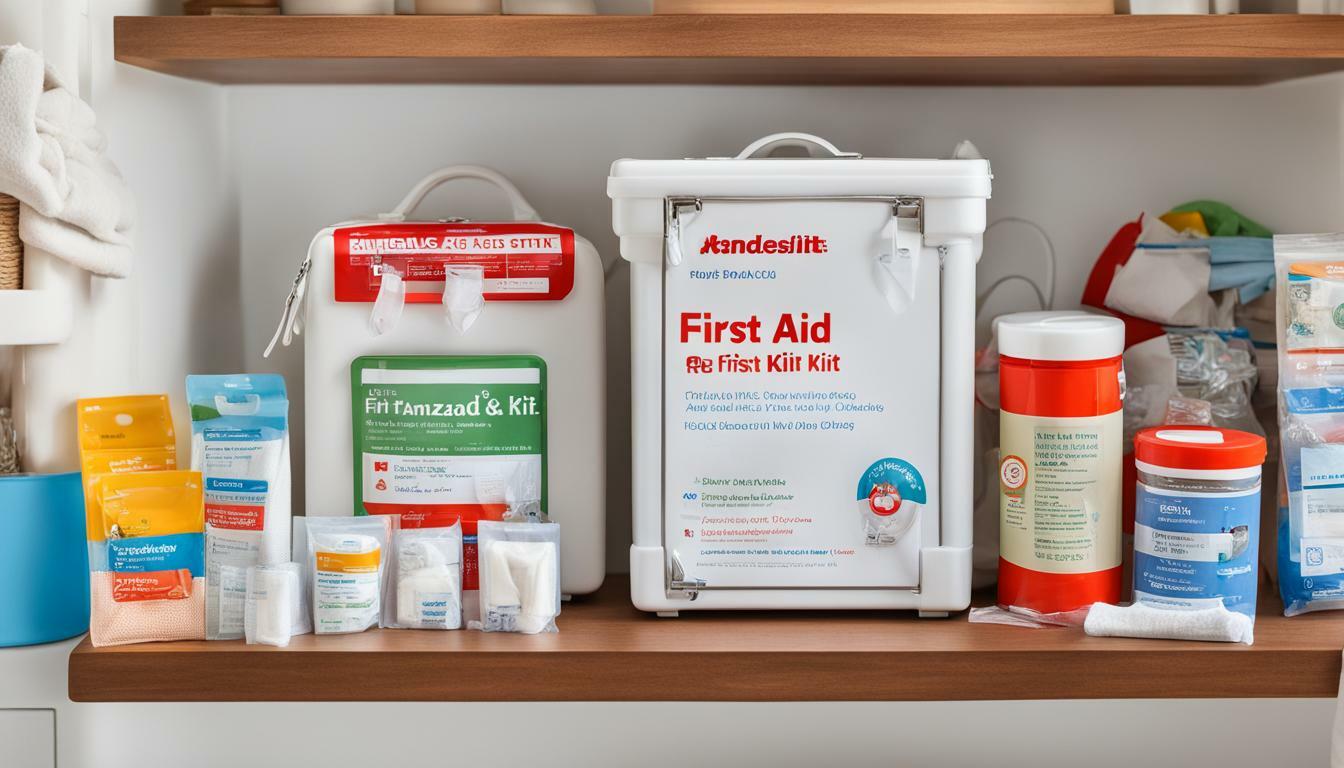
Conclusion
Child-proofing your first aid kit is an important step in ensuring the safety and accessibility of emergency supplies in your home. By taking the time to assess your current kit, selecting child-friendly supplies, and securing and storing the kit appropriately, you can reduce the risk of accidents and injuries caused by improperly stored or accessible first aid supplies.
Remember to regularly maintain and replenish your kit, ensuring that it remains prepared for emergencies, and incorporate emergency preparedness plans into your child-proofing strategy. Educating children about the importance of first aid kit safety is also crucial to creating a secure environment for your family.
By following the guidelines and tips provided in this guide, you can create a child-friendly first aid kit that prioritizes safety without compromising on urgent care. Keep your family safe and prepared by child-proofing your first aid kit today.
